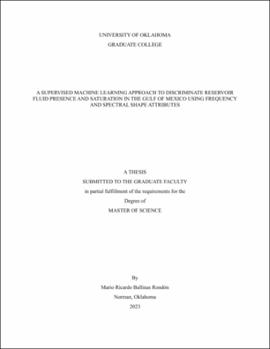| dc.description.abstract | The first chapter in this research aims to define reliable attributes to differentiate subsurface
fluids and measure their attenuation to provide insights into reservoir properties. The study
investigates the effects of fluids and saturations on seismic data by analyzing a frequency-related
suite of attributes using post-stack seismic field data from stacked reservoirs in Ursa Well #1 in
the Gulf of Mexico. The results show that high attenuation reduces higher frequencies, resulting
in a spectrum skewed towards lower frequencies with high kurtosis and low roughness, slope, and
bandwidth. The attribute analysis presents that low amounts of gas saturation exhibit more
attenuation than a fully saturated gas reservoir. Chapter 1 highlights the importance of spectral
analysis, especially the spectrum's shape, in interpreting gas saturation and attenuation effects on
post-stack seismic data allowing successful discrimination of water, oil, and high or low gas
saturations.
Furthermore, the second chapter presents a new workflow that applies supervised machine
learning algorithms to predict the presence of hydrocarbon fluids and their economic viability
using the frequency suite of seismic attributes. K-nearest neighbors, decision tree and random
forest algorithms are tested on datasets for their robustness in classifying the fluid types. The SHAP
values analysis is used to gather information on the importance of each attribute for the
classification of each fluid class. The machine learning models are trained with the Ursa dataset
and subsequentially predict in an expanded area around the training well. The King Kong and Lisa
Anne fields, belonging to a different seismic survey, are used as a validation test for the machine
learning models.
The study concludes that the machine learning models, using the frequency suite of
attributes, can predict water, oil, and high or low gas saturations within clastic reservoirs of the
Miocene Gulf of Mexico. The decision tree and random forest models correctly predicted the fluid
class in three out of four King Kong and Lisa Anne Field wells. The model predictions in the Ursa
blind test expressed reliability in the models after observation of flat spots with correct density
stacking orders. The promising results convey that using supervised machine learning algorithms
for reservoir fluid identification and gas saturation predictions can revolutionize the field of
hydrocarbon exploration and production by providing a more robust way to risk prospects using
exclusively post-stack seismic data and frequency attributes. | en_US |

